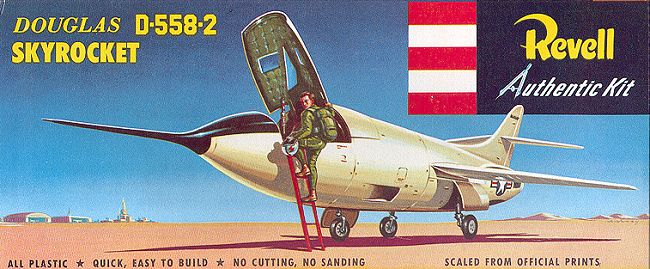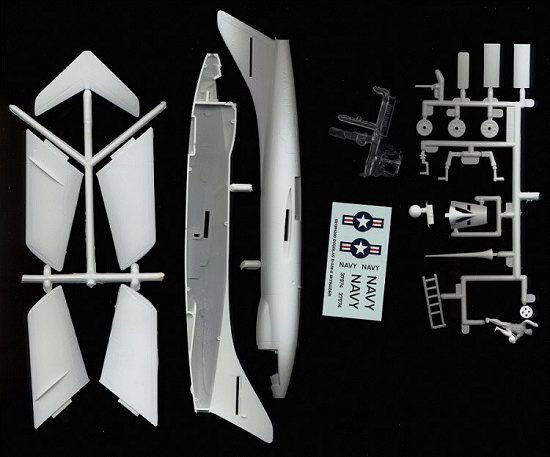
KIT: | Revell 1/65 Douglas D-558-II Skyrocket |
KIT # | H-213 |
PRICE: | $10.00 |
DECALS: | Only one aircraft; BuNo 37974 |
REVIEW BY: | |
NOTES: | This review of the 1994 re-release |

HISTORY |
Back in the heady days of the mid 1950's, the attention of the aviation community was on 'X-Planes'. These aircraft were purely experimental and very exciting. Their sole purpose was to fly higher, faster, and farther than any other. While often under the auspices of NACA (later NASA in 1958), they were funded by the USAF and, to some extent, the US Navy. The Skyrocket was one of these Navy aircraft. Borne aloft by a PB2B (B-29), the Skyrocket was then dropped and off to set records. It was originally designed to take off using a jet engine and then use it's rockets to give the final push to the stratosphere and a new record. The D558-II was the first aircraft to break the 2,000 MPH barrier piloted by Scott Crossfield. That record attempt was done, as were most, with the jet engine removed and on pure rocket power.
THE KIT |

In 1956, Revell produced a kit of the Skyrocket. This version is the one with both jet and rocket power. In 1994, it was re-released, much to the delight of many who were dreading paying collectors prices to own this kit.
It is basically unchanged from that original release; including the nice touch of having the decal placement easily found by having the locations engraved on the fuselage. As you can see from the small sheet, the national insignia will need to be replaced, but the rest is very usable.
You will also note that there is no interior to speak of. You get a pilot figure and a boarding ladder for him to climb on, and that is it. Interestingly, you have the option to prop the canopy open and a small support is given. The clear bit is very flashy and thick, but should not be a problem. It can easily be replaced with sheet acetate as there are no compound curves to worry about.
With only 24 pieces, including the ball for the stand (not included), it is bound to be a rather quick build. Color scheme is equally as simple as it was overall gloss white with a black anti-glare panel. I plan on doing mine in-flight!
REFERENCES |
McDonnell Douglas Aircraft since 1920, Vol 1 by Rene J Francillon